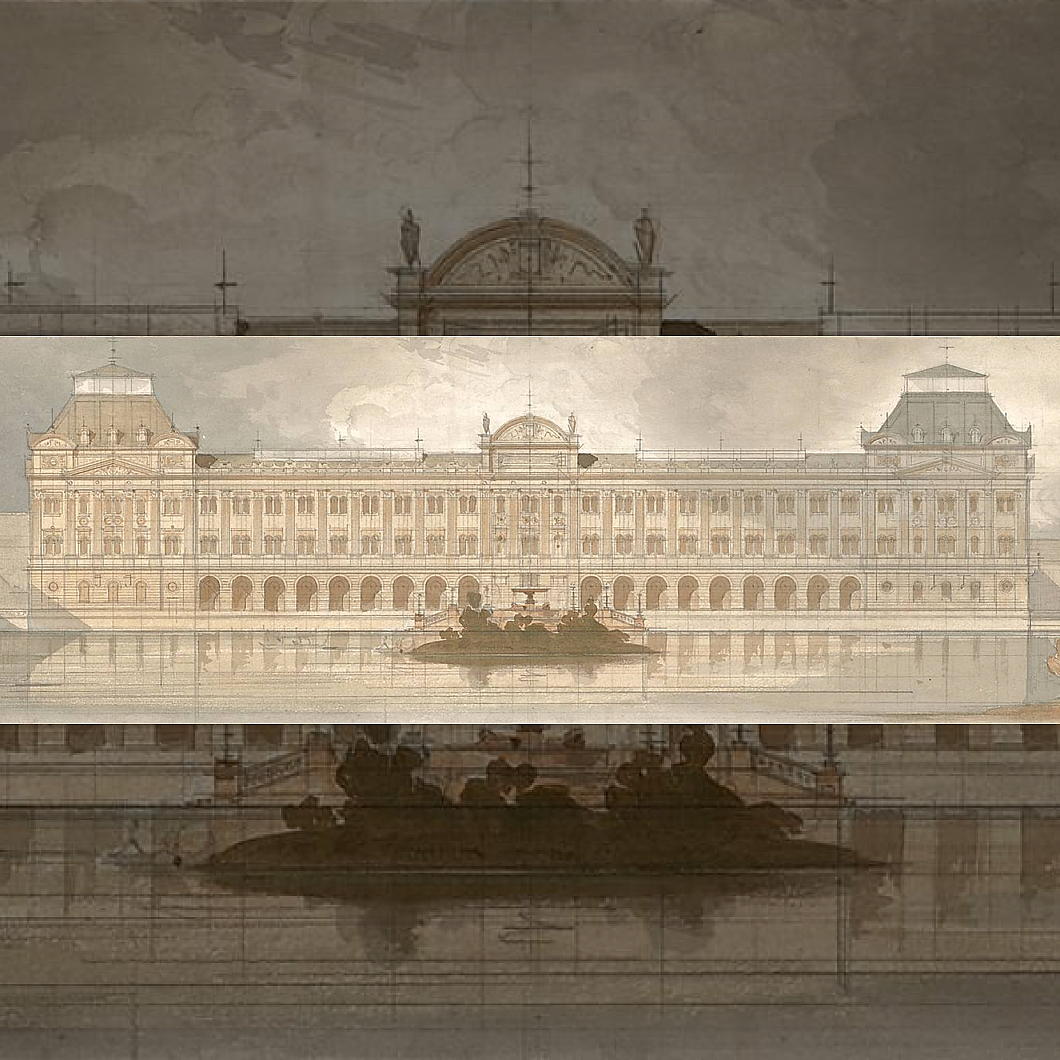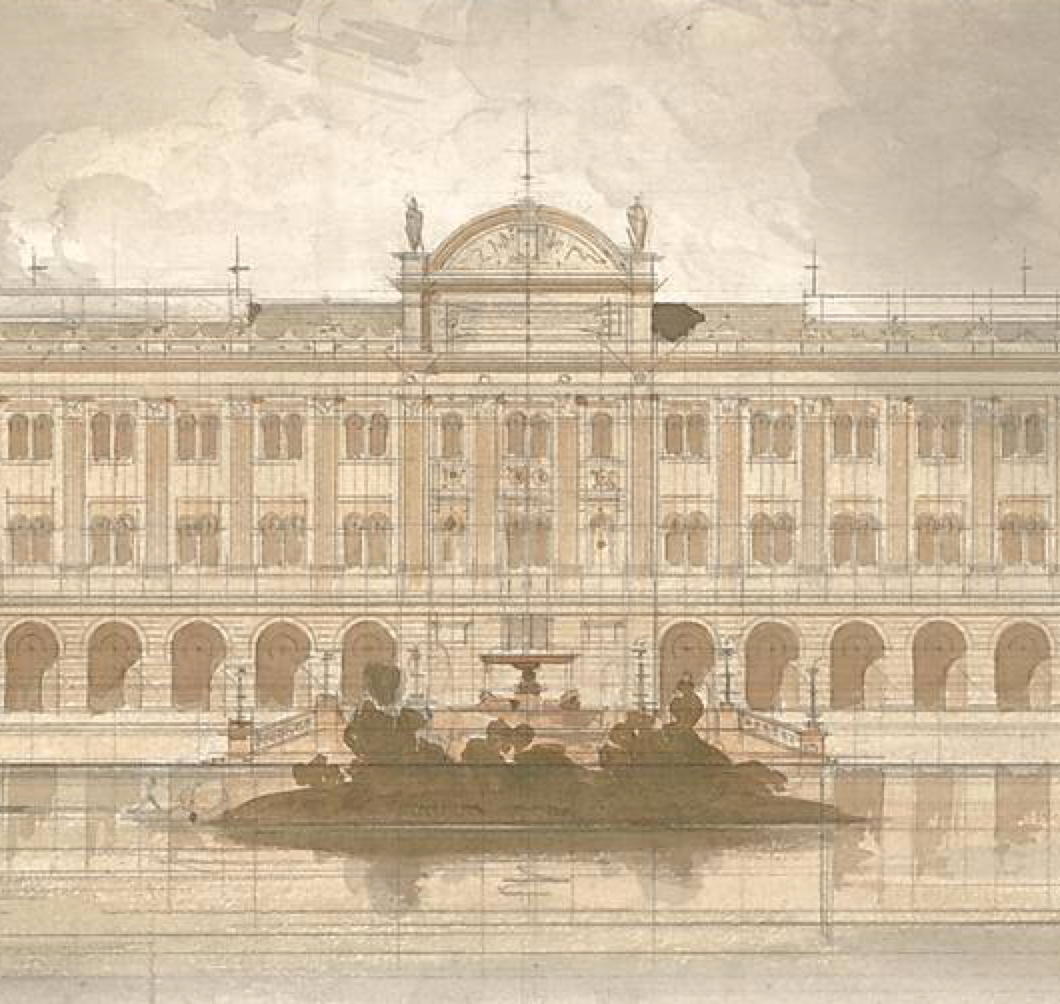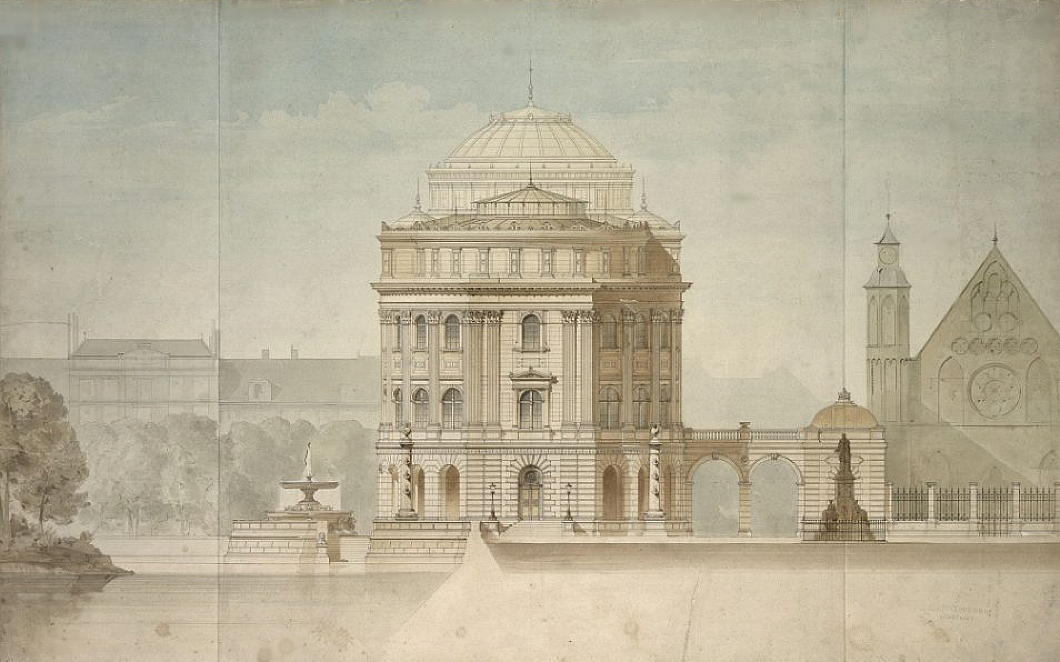

About Andrew Cusack
 Writer, web designer, etc.; born in New York; educated in Argentina, Scotland, and South Africa; now based in London.
Writer, web designer, etc.; born in New York; educated in Argentina, Scotland, and South Africa; now based in London. read more
News
Blogs
Reviews & Periodicals
Arts & Design
World
France
Mitteleuropa
Knickerbockers
Argentina
The Levant
Africa
Cape of Good Hope
Netherlands
Scandinavia
Québec
India
Muscovy
Germany
Academica
A Palace for the States-General
The nineteenth century was the great age for building parliaments. Westminster, Budapest, and Washington are the most memorable examples from this era, but numerous other examples great and small abound in Europe and beyond.
The States-General of the Netherlands missed out on this building trend, perhaps more surprisingly so given their cramped quarters in the Binnenhof palace of the Hague. The Senate was stuck in the plenary chamber of the States-Provincial of South Holland with whom it had to share, while the Tweede Kamer struggled with a cold, tight chamber with poor acoustics.

The liberal leader Johan Rudolph Thorbecke who pushed through the 1848 reforms to the Dutch constitution thought the newly empowered parliament deserved a building to match, and produced a design by Ludwig Lange of Bavaria. All the Binnenhof buildings on the Hofvijver side would be demolished and replaced by a great classical palace.
Despite members of parliament’s continual complaints about their working conditions, Thorbecke and Lange’s plans were vigorously and successfully opposed by conservatives. As the academic Diederik Smit has written,
A large part of the MPs was of the opinion that such an imposing and monumental palace did not fit well with the political situation in the Netherlands. […] In the case of housing the Dutch parliament, professionalism and modesty continued to be paramount, or so was the idea.
In fact, as Smit points out, significant alterations were made to the Binnenhof, like the demolition of the old Interior Ministry buildings by the Hofvijver, but these were replaced with structures that were actually quite historically convincing.

Further plans were drawn up in the 1920s — including a scheme by Berlage — but MPs felt that none of the proposals quite got things right and they were shelved accordingly. It wasn’t til the 1960s that the lack of space and the poor conditions in the lower chamber forced action. All the same, efficiency was the order of the day, as the speaker, Vondeling, made clear: “It is not the intention to create anything beautiful”.
Even then it wasn’t until the 1980s that the work was started, and the MPs moved into their new chamber in 1992. As you can see in this photograph, Vondeling’s aim of avoiding anything beautiful or showy has been achieved. The new chamber is certainly spacious — indeed some MPs claim it is too spacious. The art historian and D66 party leader Alexander Pechtold pointed out the distance between MPs inhibits real debate, unlike in the British House of Commons, and to that extent parliamentary design is inhibiting real democracy.

Search
Instagram: @andcusack
Click here for my Instagram photos.Most Recent Posts
- Silver Jubilee November 21, 2024
- Articles of Note: 11 November 2024 November 11, 2024
- Why do you read? November 5, 2024
- India November 4, 2024
- The Lithe Efficiency of the Old Constitution November 4, 2024
Most Recent Comments
Book Wishlist
Monthly Archives
Categories



What an appalling structure. Anything less characteristically Dutch can hardly be imagined. Thank God for the good sense of the conservative burgers and their representatives in Parliament at the time. Only a “progressive” like Thorbecke could ever have imagined that Germanic heaviness and disproportion were just what the cosmopolitan and rather French denizens of the Hague needed to bring their city up to date.
Lange was a terrible architect: his museum in Leipzig, mercifully destroyed by bombing in 1943, is lumpily hideous and a design for a parliament in Frankfurt (rather than Berlin) is only notable for its quite remarkable lack of any redeeming feature whatsoever.
One wonders, had it been built, how long it would have remained after the events of 1940-45, when all things German were pushed to the edge of public consciousness for the better part of three generations.
I rather love Lange’s unbuilt parliament — it would have made a superb Indian legislative council in the nineteenth century.
But neither Frankfurt nor Berlin have any right to be the German capital. My vote is for Vienna… or perhaps Prague. Or really the Diet should meeting places around in the odd years it is actually convened.
But I think we can all be glad this plan for the Binnenhof never got off the ground.
It was recently announced the old Second Chamber would be restored to its former glory and become a museum – a reprieve for common sense. I have always argued they should have done that from the start.